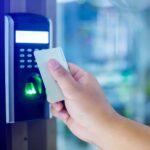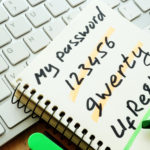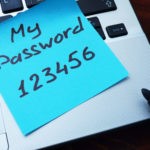A Physical Access Control System (PACS) is a security system that manages and restricts physical access to buildings, rooms, and other areas by controlling who can enter and exit. It's a way to ensure only authorized individuals can access specific locations, enhancing overall security.
Privileged Access Management (PAM) refers to the control and monitoring of accounts with elevated permissions to critical systems and data. It helps organizations prevent misuse, limit insider threats, and ensure that high-level credentials are only accessible to verified users. PAM is essential for meeting compliance standards and reducing the risk of security breaches.
A Passkey is a modern, secure method of user authentication that replaces traditional passwords with cryptographic key pairs. Designed to be phishing-resistant and user-friendly, passkeys allow users to sign into websites and applications using biometric verification (like Face ID or fingerprint), a device PIN, or a security key—without ever having to type or remember a password.
During authentication, the password (or "passphrase" / "passcode") is the object used to verify the identity of a claimed party. Passwords are commonly alphanumeric character combinations like "I'mGl@dIT's_FRIdayy2daye!". Recently, cyber criminals have been seeing rapidly growing success by exploiting people that use weak passwords that can be easily guessed. Tokens, biometrics, secret handshakes, signs, spoken phrases, physical gestures, sounds and more have also been used as passwords replacements.
Password cracking refers to the process of recovering passwords from stored or transmitted data by guessing, brute force attacks, dictionary attacks, or exploiting system vulnerabilities. It is often seen in attacks targeting weak, reused, or poorly managed passwords on systems such as email accounts, bank logins, corporate networks, and cloud services. The goal of password cracking is to gain unauthorized access to sensitive information, escalate privileges within a system, or compromise entire networks, posing a serious risk to both individuals and organizations.
Password entropy is a metric used to quantify the strength or unpredictability of a password, based on the number of possible combinations required to guess it. It is typically measured in bits, where higher values indicate greater complexity and resistance to brute-force attacks. Entropy helps users and organizations understand how secure a password is—and why length, randomness, and character variety matter.
Password hygiene refers to the accepted practices that individuals and organizations should follow in order to create and maintain more secure passwords. As passwords are a key part in the accessibility and protection of sensitive information, following good password hygiene is incredibly important when dealing with banking accounts, data servers, tax documents, and much more.
Password rage is what happens after someone has too much password stress/password fatigue. The user will become stress and shout, swear, or cry in response to password difficulties. The amount of stress that can accumulate from constantly having problems with passwords can be very high since these passwords are the key to your digital life (bank, credit, communications, etc.).
A prevalent behavior problem wherein people will use the same password for different credentials. The problem with reusing the same password is that if one password is somehow compromised, the other credentials may be too easily compromised as well.
Password sharing (or "account sharing") occurs when a user gives their login credentials to someone else for the purposes of shared access under one account. Password sharing has several ramifications for different parties. The largest risk involved in sharing passwords is the obvious security risk of trusting the other person that now has access.
Password sniffing refers to the unauthorized interception of password data during network transmission. Attackers use packet-sniffing tools to capture unencrypted or poorly protected credentials, often targeting insecure Wi-Fi, outdated protocols, or vulnerable devices. This method poses serious risks in systems that rely on traditional login methods with static usernames and passwords.
Password stress / password fatigue is caused by users having to memorize and type a large and growing number of username and password combinations. The problem is that good security means unique usernames and passwords that are both long and complex (high entropy). But the amount of stress involved in memorizing and typing these long passwords on a daily basis takes a strong toll on the users.
A password vault ("password manager" or "password wallet") is a digital tool that stores passwords so that users do not have to worry about remembering what their passwords are. Generally, a password vault is known more for securely storing passwords while a password manager is known for also offering additional management services.
Passwordless authentication is an authentication mechanism in which users log in to systems without typing a password. Instead, passwordless authentication usually takes the form of possession factor (something you have) or inherent factor (biometrics - something you are). Passwordless authentication is easier to manage for IT teams and easier to use for end users. Instead of managing thousands of passwords across hundreds of users, eliminate all those passwords instantly.
Passwordless MFA is an authentication mechanism that combines passwordless authentication and multi-factor authentication. Unlike traditional MFA, passwordless MFA requires users to log in to systems without typing a password, but also with one or more additional factors.
Penetration refers to a security incident where an intruder gains or attempts to gain unauthorized access to a system. These attacks often exploit weak passwords, unprotected endpoints, or system vulnerabilities. GateKeeper Proximity protects against such threats by providing proximity-based authentication and ensuring unattended devices are automatically locked.
Penetration tests (also known as Pen Tests) are procedures that simulate a malicious actor's attacks on a system to identify potential vulnerabilities. Penetration tests can be performed on computer networks, software code, platforms, and physical devices.
A type of social engineering attack that attempts to acquire secret information such as login credentials, bank information, and other high-value data assets. Usually the perpetrator will ask potential victims to "confirm" their confidential information. IT managers must maintain a strong cyber security posture to prevent end users from falling victim to constant phishing attacks.
Piggybacking is a social engineering act that occurs when an unauthorized user follows an authorized user into a system with consent. In physical security, piggybacking mainly occurs at access control points. In digital security, piggybacking occurs when users give computer and website access to others.
Privileged Access Management, or PIM, is a framework for tools and processes designed to monitor and control the access privileges of root, client, and other administrative/service accounts on an organization.
The process of authenticating a person's identity through the validation of presence. Proximity authentication involves using either sensors to determine how close the a key (token or phone) is or an older example of motion detectors to catch a person's arrival.
A Public Safety Answering Point (PSAP) is a call center or dispatch center that handles emergency calls and coordinates emergency responses. PSAPs are typically operated by local or regional government agencies, such as law enforcement agencies, fire departments, or emergency medical services.
Push Authentication is a form of Two-Factor Authentication (2FA) or Multi-Factor Authentication (MFA) where a user is required to respond to a push notification on a linked mobile device. This method provides greater security by requiring an additional form of identity verification aside from a typical username and password.
According to studies, over 30% of all support tickets are related to password resets/forgotten passwords.
Enterprise 2FA and password manager. One key for all your passwords. Experience fully automated login and security. Faster MFA, auto-OTP, password manager, and worry-free workflow with proximity-based privileged access management for Windows 11, 10, 8, 7, VPNs, websites, and desktop applications including MES, EHR, CAD, and more.
or call 240-547-5446
























